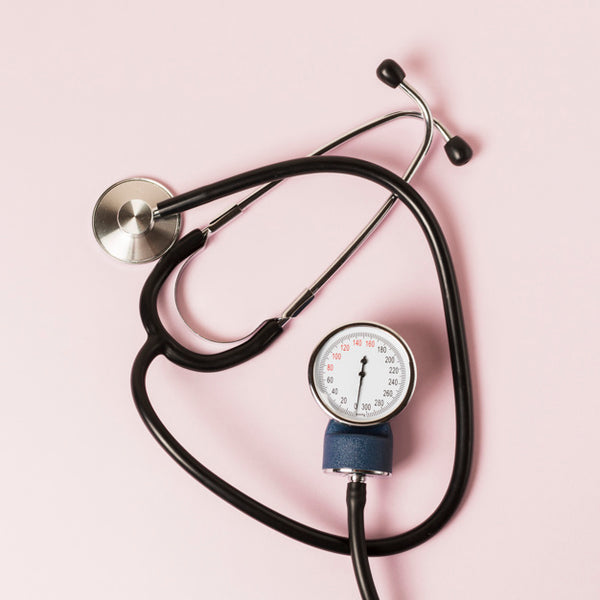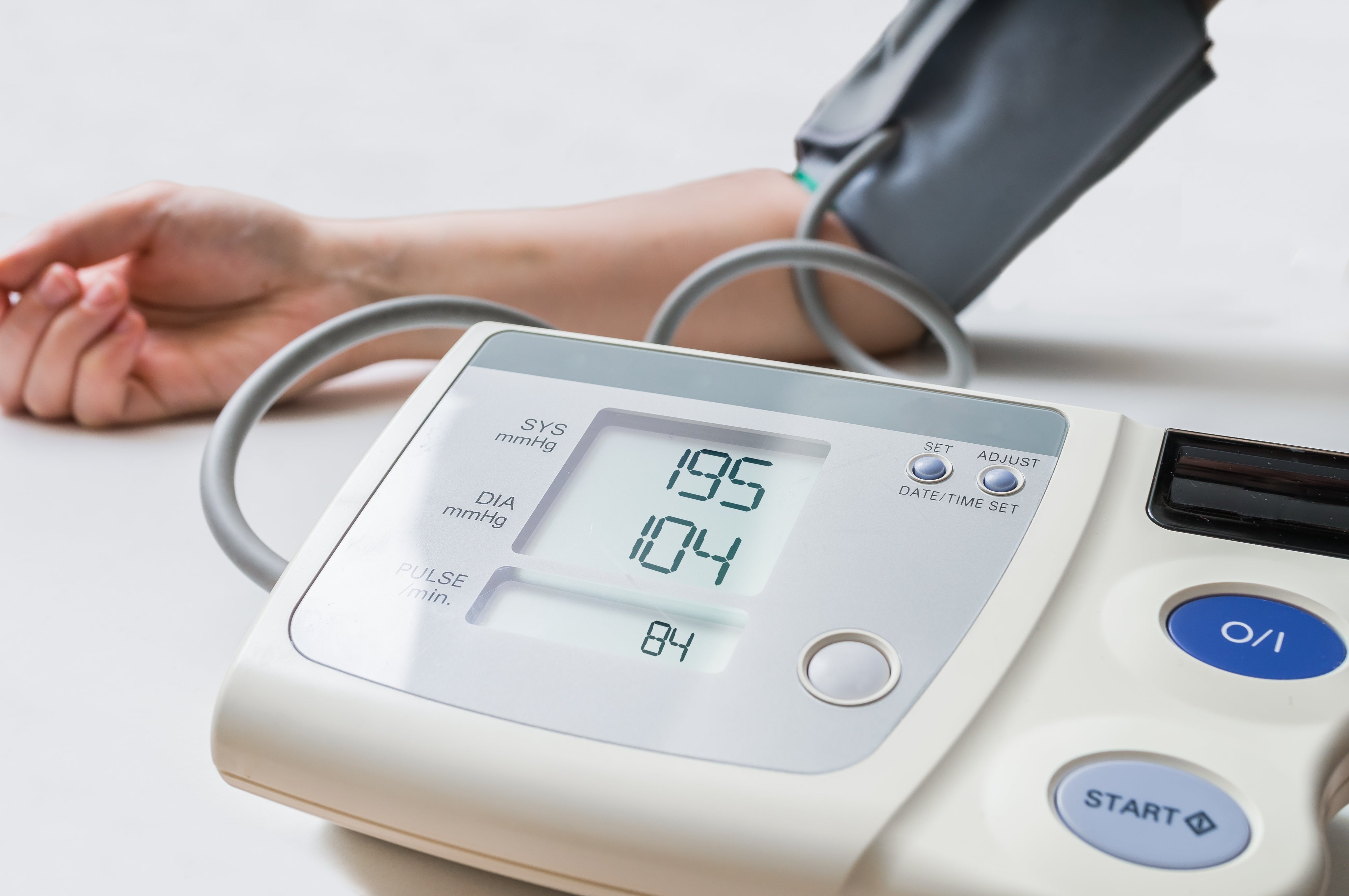What Is Blood Pressure?
Blood pressure is the force that regulates the delivery of your blood throughout your body and helps it return to the heart. Blood pressure allows blood to be pumped by each heartbeat to circulate through the vascular system—the veins, arteries, and capillaries. The blood delivers oxygen, nutrients, and other elements such as white blood cells (essential for our immune system) to our organs and tissues. As it is returned to the heart, the blood carries back carbon dioxide and waste products.
Why Is Knowing Your Blood Pressure Important?
Keeping tabs on your blood pressure matters because high blood pressure is associated with a risk of several health problems. High blood pressure essentially puts a strain on your arteries and your heart. The most severe problems from high blood pressure are heart attack and stroke.
It’s not easy to know your blood pressure without taking readings. Because many people with high blood pressure don't feel anything wrong and can cause damage without knowing it, high blood pressure (or hypertension) is often called "the silent killer."
For this reason, you will want to learn how to check blood pressure yourself, instead of waiting for a visit to the doctor.
The Best Time to Take Blood Pressure
When is the best time to take your blood pressure? Your doctor may advise you to take your blood pressure:
- Before or after you take a particular medicine
- Before or after you do a particular activity, such as exercise
- If you feel dizzy or faint
- At certain regular times of day
What Is a Healthy Blood Pressure Range?
Blood pressure readings are reported as the systolic over the diastolic pressure. The first number is systolic, it measures the force of the blood against the artery walls as your heartbeats, and the second number is the diastolic (the blood pressure between heartbeats).
Blood pressure readings fall into five categories:
- Hypotension or Low Blood Pressure: defined as below 90 / 60 mm Hg.
- Normal Blood Pressure: defined as below 120 / 80 mm Hg.
- Prehypertension: defined as 120-139 / 80-89 mm Hg.
- Stage 1 Hypertension: defined as 140-159 / 90-99 mm Hg.
- Stage 2 Hypertension: defined as 160 / 100 mm Hg or higher.
Wondering how often should I check my blood pressure if I have hypertension? The best advice would be to check with your doctor, but it should most likely be twice a day.
Which Is More Important, Systolic, or Diastolic Blood Pressure?
Both the systolic and diastolic blood pressure numbers in your reading are important. An increase in either number means you are hypertensive.
How to Take Blood Pressure Readings Yourself
Digital blood pressure machines are the easiest way to take your own blood pressure. Today’s home use machines don’t need a lot of dexterity, and they are both accurate and affordable. They tell you which arm to measure blood pressure, right or left, and basically everything you need to know for how to check blood pressure.
Can you Take your Blood Pressure at Home Without a Machine?
You might be wondering how to take blood pressure if you don’t yet own a monitoring device. The way to do this is with a stethoscope and blood pressure cuff.
Are Home Blood Pressure Machines Accurate?
Yes, and they take the stress off of having to listen, count, and release the pressure simultaneously, like with a manual cuff and stethoscope. When you first get your blood pressure monitor, bring it to your doctor's visit to check the machine’s accuracy.

Some Suggested Blood Pressure Monitors
Omron Platinum Blood Pressure Monitor
A favorite of doctors, this digital Bluetooth blood pressure machine can store readings for two users, plus it shows the user’s previous pressure along with current reading.
Alcedo Blood Pressure Monitor
This very affordable automatic digital cuff has a large screen with oversized numbers for visibility, a talking function, a 2-user mode, and solid reviews.
GreaterGoods Blood Pressure Monitor Cuff
This monitor kit comes complete with a carrying case, the cuff, monitor, and a free app for iPhone or Android. It comes ready to be powered with its own plug or included batteries.
If You Have High Blood Pressure
You may wish to ask your doctor about Revive’s Blood Pressure RX supplement for helping to reduce your blood pressure and improving your overall heart health. Favored by athletes, the formula uses clinically researched, natural ingredients like coenzyme Q10, garlic, arjuna, Suntheanine®, and herbs proven to lower blood pressure.
When Should You Not Take Your Blood Pressure?
In order to get accurate home readings, you shouldn’t take your blood pressure until at least two hours after eating or drinking any alcohol. You also shouldn’t smoke, drink caffeine, or exercise within a half-hour before taking your readings.
How to Take Blood Pressure at Home
Here’s a high-level outline of the steps for most original blood pressure cuffs. However, many monitors are much easier than this, and newer ones are mostly digital. Whichever you purchase will come with detailed instructions, which you should follow carefully.
- First, you will locate your pulse.
- Secure the cuff on your arm.
- Place the stethoscope in your ears.
- You will first inflate the cuff as instructed (generally by turning a screw on the air bulb to close the air valve, and then squeezing a bulb with one hand, while you hold a pressure gauge in the other).
- Then you deflate the cuff as instructed. (Watching the gauge, slowly releasing the pressure by opening the air valve, letting the gauge fall just 2 to 3 points with each heartbeat.)
- While deflating the cuff, you will listen for the first pulse beat, and note the reading on the gauge. This is your systolic pressure.
- You’ll continue to listen carefully until you can no longer hear your pulse, and then note the reading on the gauge. This is your diastolic pressure.
Takeaway
With the advent of digital blood pressure monitors, you no longer have to baffle over how to take blood pressure at home. Taking blood pressure at home usually delivers a reading about five points lower than at the doctor’s office, and it’s simple to do. Remember to consult your doctor if you find unusual or repeated increases in your blood pressure.
The information being presented in this blog is intended to be used as educational or resource information only. It is not intended to be a substitute for medical advice from your healthcare provider. This content should not be used for the diagnosis or treatment of any medical condition. If you have any questions or concerns about your health, please contact your healthcare provider. You should call 911 for all medical emergencies. Revive MD is not liable for any advice or information provided on this blog, which advice or information is provided on an “as-is” basis, and assumes no liability for diagnosis, treatment, decisions, or actions made in reliance upon any advice or information contained on this blog. No warranties, express or implied, are made on the information that is provided.



